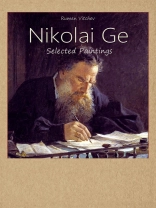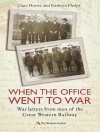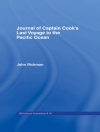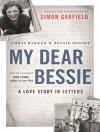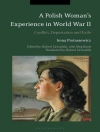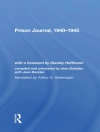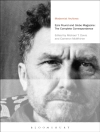Nikolai Nikolaevich Ge (1831 – 1894) was а Russian realist painter famous for his works on historical and religious motifs.
He was born in Voronezh City, to a Russian noble family of French origin. His grandfather emigrated to Russia in the 18th century. His parents died when he was still a child, so Nikolai was raised by his serf nurse. He graduated from the First Kiev Gymnasium and studied at the physics-mathematics department of Kiev University and Saint Petersburg University.
In 1850 he gave up his career in science and entered the Imperial Academy of Arts in Saint Petersburg. He studied in academy under the historical painter Pyotr Basin until 1857. Ge graduated from the academy in 1857 with a gold medal for his painting The Witch of Endor Calling Up the Spirit of the Prophet Samuel. According to Ge himself, during that period he was strongly influenced by Karl Briullov.
His gold medal provided him a scholarship for studying abroad. He visited Germany, Switzerland, France and in 1860 settled in Italy. In Rome he met Alexander Andreyevich Ivanov who strongly influenced Ge.
In 1861 Ge painted The Last Supper; using the image for his central figure of Christ a photograph taken by Russian photographer Count Sergei Lvovich Levitsky (1819–1898) of Levitsky’s cousin Aleksandr Ivanovich Herzen (1812–1870); the pro-Western writer and outstanding public figure.The painting (bought by Tsar Alexander II of Russia) made such a strong impression when it was shown in Saint Petersburg in 1863 that Ge was made a professor of Imperial Academy of Arts.
In 1864 Ge returned to Florence and would paint not only Herzen’s portrait but also the Messengers of the Resurrection and the first version of the Christ on the Mount of Olives. The new religious paintings at that time were not much of a success, and the Imperial Academy refused to exhibit them in its annual exhibition.
In 1870 Ge again returned to Saint Petersburg there he turned to Russian history for subject matter. The painting Peter the Great Interrogates Tsarevich Alexey at Peterhof (1871) was a great success, but other historical paintings were met without interest. Ge took the cold response to his work very hard. He wrote that a man should live by doing agricultural work, and the art should not be for sale. He bought a small khutor (farm) in Chernigov gubernia (currently Ukraine) and moved there. He became acquainted with Leo Tolstoy and became an enthusiastic follower of his philosophy.
In the early 1880s he returned to art producing religious paintings and portraits. He stated that everybody has a right to have a portrait so he agreed to work for whatever low commission the subject could afford. Among his portraits of the time was his famous portrait of Leo Tolstoy, a portrait of Mikhail Saltykov-Shchedrin and many others.
His late paintings on New Testament subjects of that period were praised by liberal critics like Vladimir Stasov, criticized by conservatives as illustrating Ernest Renan rather than the New Testament and forbidden by the authorities for blasphemy. Quod Est Veritas? Christ and Pilate (1890) was expelled from the exhibition; The Judgment of the Sanhedrin: He is Guilty! (1892) was not admitted to the annual Academy of Arts exhibition; The Calvary (Golgotha) (1893) remained unfinished; The Crucifixion (1894) was banned by Tsar Alexander III.
Rumen Vitchev
Nikolai Ge: Selected Paintings [EPUB ebook]
Nikolai Ge: Selected Paintings [EPUB ebook]
यह ईबुक खरीदें और 1 और मुफ़्त पाएं!
भाषा अंग्रेज़ी ● स्वरूप EPUB ● ISBN 9788822811066 ● फाइल का आकार 3.8 MB ● प्रकाशक Publisher s22302 ● प्रकाशित 2017 ● डाउनलोड करने योग्य 24 महीने ● मुद्रा EUR ● आईडी 5263181 ● कॉपी सुरक्षा के बिना
